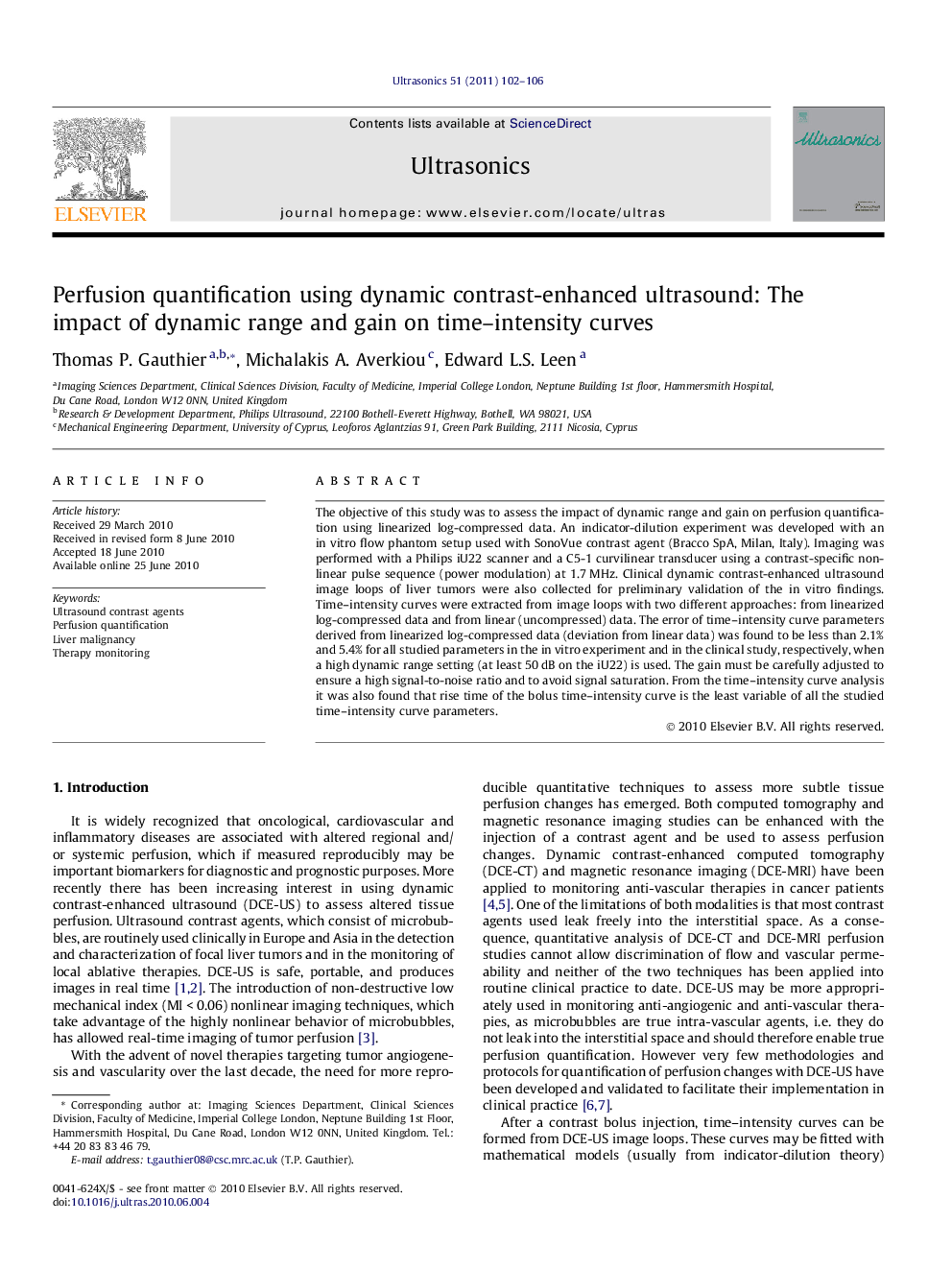| Article ID | Journal | Published Year | Pages | File Type |
|---|---|---|---|---|
| 1759535 | Ultrasonics | 2011 | 5 Pages |
Abstract
The objective of this study was to assess the impact of dynamic range and gain on perfusion quantification using linearized log-compressed data. An indicator-dilution experiment was developed with an in vitro flow phantom setup used with SonoVue contrast agent (Bracco SpA, Milan, Italy). Imaging was performed with a Philips iU22 scanner and a C5-1 curvilinear transducer using a contrast-specific nonlinear pulse sequence (power modulation) at 1.7Â MHz. Clinical dynamic contrast-enhanced ultrasound image loops of liver tumors were also collected for preliminary validation of the in vitro findings. Time-intensity curves were extracted from image loops with two different approaches: from linearized log-compressed data and from linear (uncompressed) data. The error of time-intensity curve parameters derived from linearized log-compressed data (deviation from linear data) was found to be less than 2.1% and 5.4% for all studied parameters in the in vitro experiment and in the clinical study, respectively, when a high dynamic range setting (at least 50Â dB on the iU22) is used. The gain must be carefully adjusted to ensure a high signal-to-noise ratio and to avoid signal saturation. From the time-intensity curve analysis it was also found that rise time of the bolus time-intensity curve is the least variable of all the studied time-intensity curve parameters.
Related Topics
Physical Sciences and Engineering
Physics and Astronomy
Acoustics and Ultrasonics
Authors
Thomas P. Gauthier, Michalakis A. Averkiou, Edward L.S. Leen,
